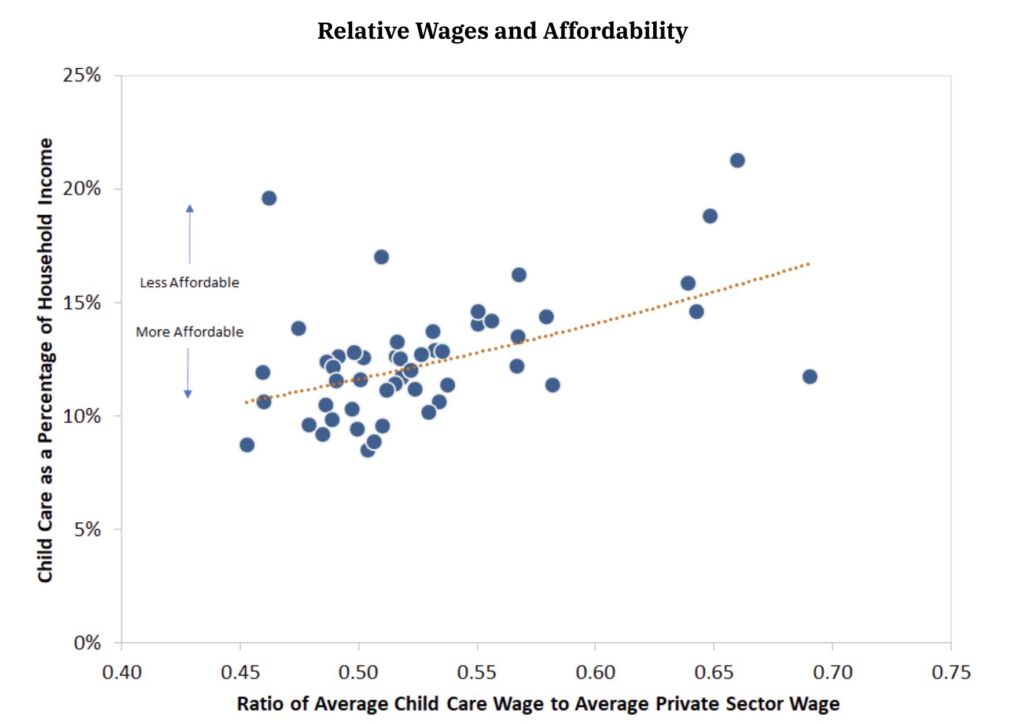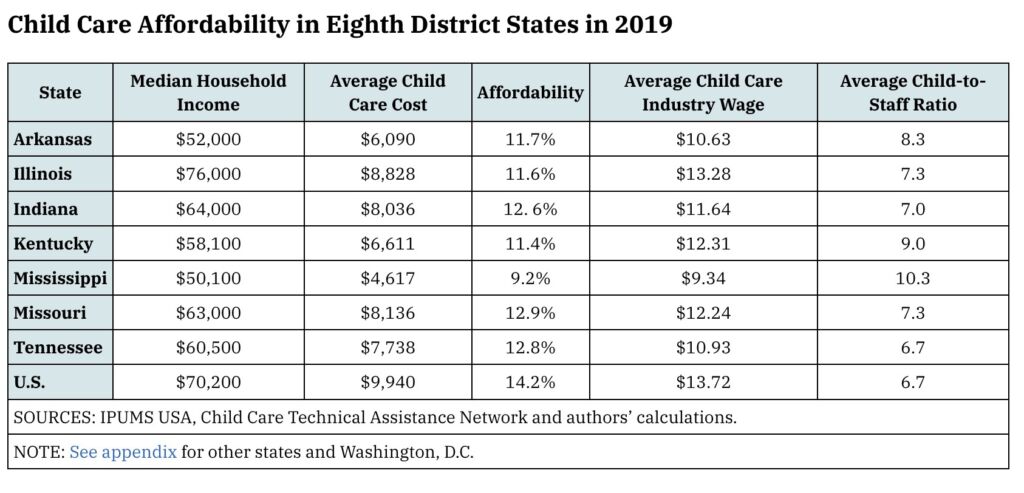A study by the Federal Reserve Bank of St. Louis finds that strict regulations raise the cost of childcare
In June this year, American Experiment released a report showing that excessive regulations are to blame for the high cost of licensed center-based care. Specifically, we noted that strict child-staff ratios, as well as stringent hiring and training requirements, raise the cost of providing care.
As we noted, Minnesota is one of the most expensive states for center-based care. Correspondingly, it also has some of the strictest regulations.
Last week, the Federal Reserve Bank of St. Louis released a study echoing these findings. Specifically, they found that childcare affordability — measured by childcare cost as a share of median income — decreases as the child-staff ratios get stricter. That is, the more children an individual staff can take care of, the lower the cost of childcare will be since those costs are spread over a higher number of children.

This is the same thing we found in our report. As we reported, our study estimated that reducing the child-staff ratio for infants by one raises the cost of infant center-based care by $2,800 annually. And reducing the child-staff ratio by one for 4-year-olds raises the cost of center-based care for that group by $450 annually.
The bank also found that higher childcare wages are associated with less affordability. This is because when providers have to pay higher wages, they raise tuition for parents.

In our study, we also noted when providers are faced with strict hiring and training requirements, they have to raise wages in order to attract qualified workers. This also raises the cost of care, leading to high tuition.
Specifically, we estimated that requiring an extra level of education for workers, raises the cost of center-based care by$1,900 for infants, and by $1,300 for four-year-olds — annually.
States in the Eighth Federal Reserve District
The St. Louis Federal Reserve Bank is the headquarters of the Eighth Federal reserve district which is comprised of the following states: Arkansas, Illinois, Indiana, Kentucky, Mississippi, Missouri, and Tennessee.
According to the bank,
The states that are part of the Eighth Federal Reserve District have relatively lower child care costs, ranging $4,500 to just under $9,000. In the Eighth District, all the states are generally more affordable than the U.S. average; the states’ values range from 9% to 13% of annual household income required to cover the cost of child care.
But even in that case, there are still some differences among the states in the eight districts when it comes to affordability. Mississippi, for example, is the most affordable. And as per the study findings, it has the lowest wages and highest child-to-staff ratios.

Subsidies are undesirable
Policymakers usually propose subsidies as a way to address the lack of affordable childcare. But as we noted, subsidies only increase demand — while sometimes restricting supply through enhanced regulations. This drives prices further.
This is an issue that the study also makes note of.
Forms of household assistance, such child care subsidies to households, may have adverse effects in the long run by increasing the demand for child care when supply is limited, thus pushing up prices; in this case, affordability could remain unchanged.
It’s all about the rules
If strict rules are what raise the cost of childcare, then loosening those rules would certainly drive costs down. But according to the Federal Reserve Bank of St. Louis, some key drivers of costs are also associated with better quality of service, so there is a tradeoff that policymakers have to reckon with.
But as our report showed, this is a tradeoff that most research does not seem to find evidence for. According to some research, regulations often affect observable characteristics that have little or no effect on quality.
One thing is clear, however. Strict regulations drive up the cost of childcare — regardless of whether they improve quality or not. Numerous research studies agree with this finding. Our study also confirmed these findings. The Federal Reserve Bank of St. Louis is also saying the same thing.
And in order to improve childcare affordability, policymakers will have to contend with this fact sooner or later.